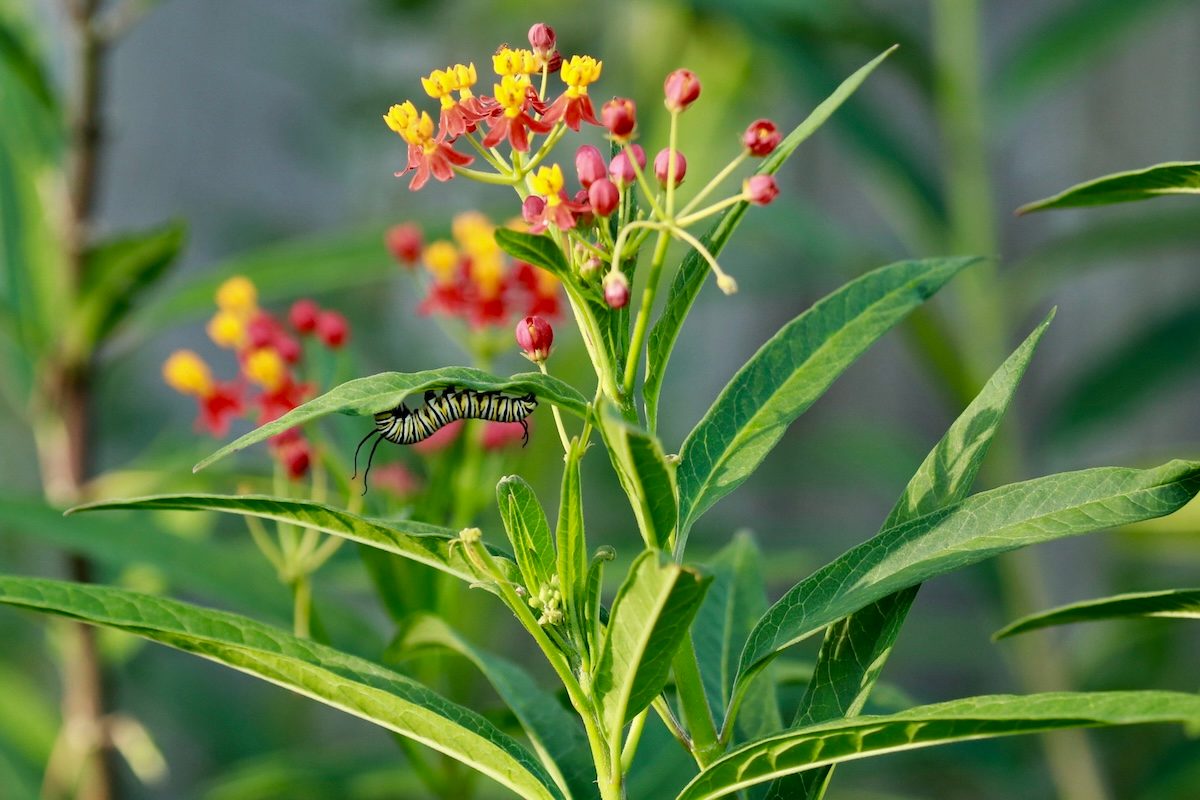Should you avoid planting tropical milkweed for monarchs? See what garden experts say and find native milkweed varieties to grow instead.

Is Tropical Milkweed Bad for Monarchs?

On This Page
Think Twice Before Planting Tropical Milkweed

The population of monarch butterflies has declined by as much as 90 percent in the last 20 years. Loss of habitat, milkweed and other native nectar plants is a major reason. Milkweed is the one plant monarch butterflies rely on to successfully complete their life cycles.
Adult females lay eggs only on milkweed leaves. Gardeners are eager to help their favorite orange butterflies, and planting milkweed is one of the best ways to do that. But many experts recommend avoiding tropical milkweed (Asclepias curassavica). Here’s why.
While tropical milkweed is nonnative to the United States, it’s easy to grow and still beneficial to monarchs. But it doesn’t die back in the southern U.S. and California. This may encourage monarchs to stop short of their full migration.
Tropical milkweed types also host a parasite that infects and harms monarchs. To reduce these problems, cut back the plants to a few inches high for the cool fall and winter months. Northern gardeners can grow the plants in a container and treat them as an annual.
Check out 11 fascinating monarch butterfly facts.
Tropical Milkweed vs Native Milkweed

Fortunately, there are many alternatives that gardeners can grow to help monarchs. Replace tropical milkweed plants with one of the more than 65 native milkweed varieties that are available.
Consult with a native plant specialist to find a milkweed native to your specific area. Or try these three types of milkweed that can be planted almost anywhere: common, swamp and butterfly weed.
Should You Grow Giant Milkweed?

“I was walking around the Butterfly Garden at Arthur R. Marshall Loxahatchee National Wildlife Refuge in Boynton Beach, Florida, when I found this plant (above). Can you identify it for me?” asks Birds & Blooms reader Marilynne Strazzeri.
Gardening expert Melinda Myers says, “This is crown flower (Calotropis gigantea), also known as giant milkweed. It is a native plant of Asia and tropical Africa. The flowers are pollinated by bees and butterflies, and the plant is a host plant for the monarch caterpillar. It is heat and drought tolerant, and hardy to Zones 9 to 11.
There is concern with tropical milkweeds becoming invasive in areas where they are hardy. Recent research has also left scientists divided over the value and threat of growing tropical milkweeds in areas where it is hardy.
On one hand, the evergreen varieties encourage monarchs to winter in southeastern North America instead of following their normal migration path, while the native milkweed plants die back in winter. And some studies have found that the presence of evergreen milkweed also puts the monarch at a higher risk for certain diseases. On the other hand, some scientists feel that the tropical varieties may help the monarchs regain some of their lost habitat, and that growing these may benefit the butterflies.”
Better Milkweed Choices for Western Monarchs
The Monarch Joint Venture recommends the following regional milkweed species for California gardeners. Download a fact sheet at monarchjointventure.org.
- Mexican whorled (A. fascicularis)
- Showy (A. speciosa)
- Desert (A. erosa)
- California (A. californica)
- Heartleaf (A. cordifolia)
- Woolly (A. vestita)
- Woolly pod (A. eriocarpa)
Whichever native type of milkweed you choose, if it’s possible, start your seeds indoors under artificial lights. The seedlings will be ready to transplant in the garden once they are 3 to 6 inches tall and when the threat of frost has passed. Plan for about four to eight weeks of indoor growing time.
After the dainty milkweed flowers stop blooming in late summer, their 2- to 4-inch seed pods burst open to reveal silky seeds that fly away with the wind, starting the growing cycle anew.
Is honeyvine milkweed invasive? Should you remove milkweed bugs? Here’s what you need to know.
About the Expert
Melinda Myers is the official gardening expert for Birds & Blooms. She is a TV/radio host, author and columnist who has written more than 20 gardening books. Melinda earned a master’s degree in horticulture from the University of Wisconsin-Madison.




















